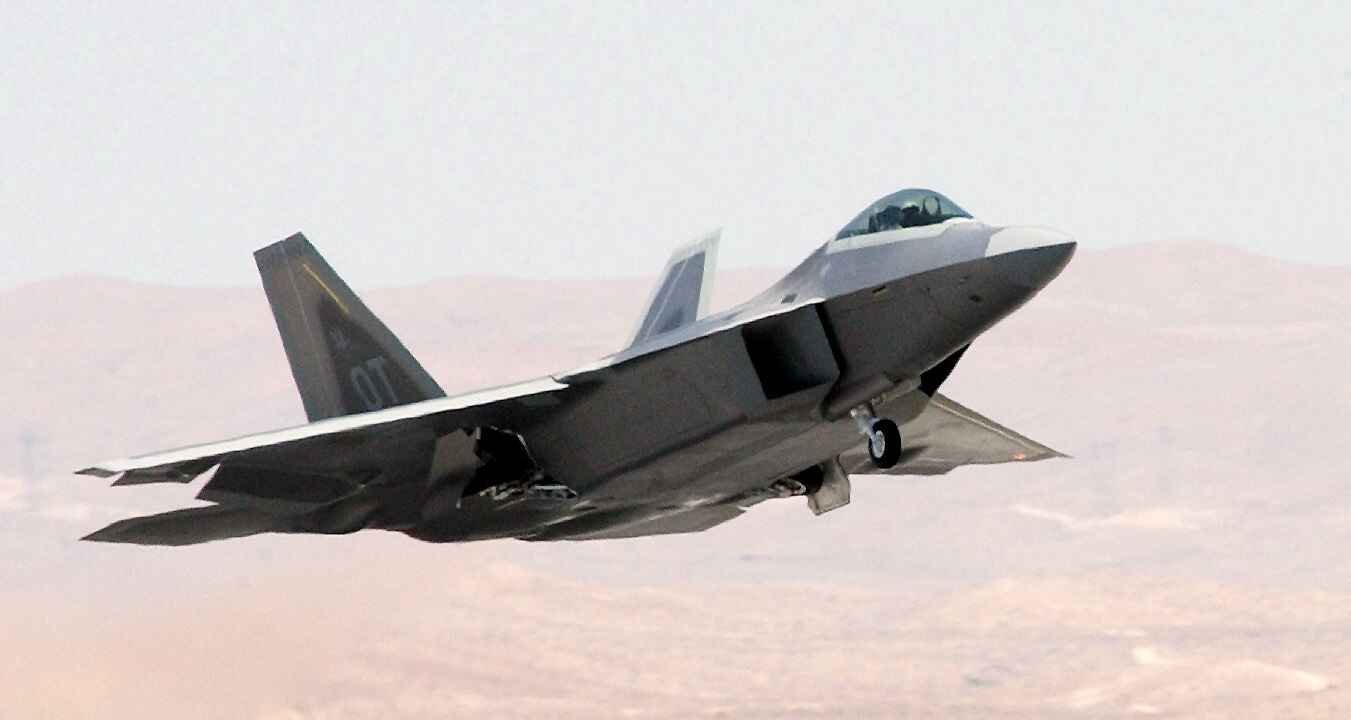The F-22 remains the greatest warplane in the world.
America’s futuristic F-22A Raptor is yet again proving why it is undeserving of the United States Air Force’s criticism—and threats to scale down. As the Air Force pines for what amounts to yet another boondoggle, the “Next-Generation Air Dominance” (NGAD) sixth-generation warplane, the F-22 is proving it’s still combat ready and effective. So much so that, in fact, the Air Force is adding an entirely new infrared tracking system to help keep the sleek, gray raptor lethal for the next half century.
The New System
Recently, The Aviationist reported that the Air Force was adding Tactical Infrared Search and Track (TacIRST) onboard these cutting-edge warbirds. According to The Aviationist’s Stefano D’Urso, the TacIRST “is a next-generation sensor developed by Lockheed Martin which allows [the F-22] to detect and track airborne threats with weapon-quality accuracy.” He continued, “The multifunction sensor, which can be used for both reconnaissance and threat-warning, features a compact design with a very small form factor and is based on an open architecture.”
In other words, the Air Force is proving that they do not need a costly, time-consuming sixth-generation warplane to stay competitive and dominant over the next half century. All they need is to upgrade the F-22, which is simply the greatest air superiority warplane ever conceived. Even China’s Chengdu J-20 “Mighty Dragon,” which comes the closest to matching the F-22’s lethality and stealth capabilities, does not hold an afterburner to America’s vaunted F-22.
Greater Upgrades Coming to the F-22
Indeed, there are unconfirmed reports indicating that the upgraded TacIRST being installed by Lockheed Martin on the F-22s is part of a larger set of upgrades being done to the F-22’s AN/AAR-56 Missile Launch Detector (MLD). In fact, the F-22 is undergoing an entirely new set of improvements that will account for $7.8 billion of investments by 2030. Meanwhile, the Air Force is investing $3.1 Billion for research and development on new systems specifically for the F-22, with an additional $4.7 billion going toward procurement.
Already, the Air Force has been making interesting additions to the F-22 since Congress finally squelched its attempts to start retiring the oldest F-22s in their fleet. One such modification has been the introduction of stealthy external fuel tanks. An essential component for increasing the striking range of any warplane, because of the need to maintain the F-22’s low radar cross-section, external fuel tanks were never allowed on the plane. Now, the military has acquired external fuel tanks that are themselves stealthy and do not impinge upon the covert nature of the F-22.
These are the best moves the Air Force can make. In fact, the Air Force should abandon their fantasy of getting the sixth-generation plane and apply some of the advances intended for the sixth-generation into the F-22 fleet. Things like the “Loyal Wingman” concept—drones deployed from the manned aircraft that act as surveillance systems and enhance the attack capabilities of the manned system—should be incorporated into the F-22. The artificial intelligence (AI) features that the Air Force wants on their proposed NGAD sixth-generation fighter should instead be placed in the existing fleet of F-22s.
Lastly, the Air Force should restart the production line for the F-22 that was prematurely canceled by President Obama in 2010. Yes, it would be a costly affair. But the F-22 is a proven product and can clearly still outperform any other system it will face in the world’s unfriendly skies. As has been noted, if the F-22 production line were restarted and some of America’s closest allies, such as Israel and Japan, were included in the program, it would help defray the cost. Further costs could be reduced by having Lockheed develop an aircraft carrier-friendly variant of the F-22.
The F-22 remains the greatest warplane in the world. The Air Force is right to make investments in modernizing and enhancing its capabilities. There should never again be any talk of retiring these planes or replacing them with a mythical sixth-generation boondoggle until at least the middle of this century.
About the Author: Brandon J. Weichert
Brandon J. Weichert, a Senior National Security Editor at The National Interest as well as a Senior Fellow at the Center for the National Interest, and a contributor at Popular Mechanics, consults regularly with various government institutions and private organizations on geopolitical issues. Weichert’s writings have appeared in multiple publications, including the Washington Times, National Review, The American Spectator, MSN, the Asia Times, and countless others. His books include Winning Space: How America Remains a Superpower, Biohacked: China’s Race to Control Life, and The Shadow War: Iran’s Quest for Supremacy. His newest book, A Disaster of Our Own Making: How the West Lost Ukraine is available for purchase wherever books are sold. He can be followed via Twitter @WeTheBrandon.
Image: Wikimedia Commons.
